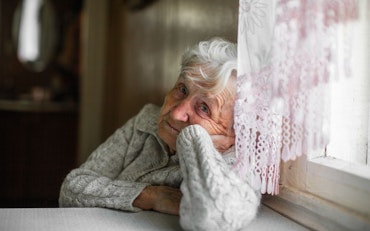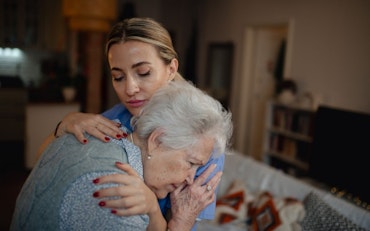Project hopes children could prove key in creating change in aged care
In comparison to its international counterparts, Australia’s welcome of intergenerational care has been slow, but a new project run by Griffith University and funded by the Federal Government, hopes to create change.

The joining of care between older and younger generations offers some significant benefits (Source: Shutterstock)
The Intergenerational Care Project is working with older people (aged over 65) living with and without dementia, and young children aged 3-5 years, bringing the two age groups together through purposeful activities designed to build relationships and a sense of meaning.
Griffith University Lecturer Dr Katrina Radford, says their project, which is designed to trial two models of intergenerational care, seeks to examine the socio-economic costs and benefits, develop an evidence based education program that sits behind a meaningful program and examine the implications this has on workforce outcomes such as retention.
The two models used in the project include:
The Shared Campus model – where aged day care and child day care centres offer their programs on the same site with shared infrastructure and facilities, with the intergenerational care program then provided in a multi-function room common to both aged care and children care facilities; and
The Visiting model – that includes the use of centres located separately and either children or older people are transported to the other site where intergenerational activities are held for an hour per week.
“Intergenerational care programs begin to unpack the stereotypes surrounding people living with dementia and people over the age of 65 in general,” Dr Radford says.
“In addition, it may contribute to reducing juvenile delinquency and improving the social outcomes of some children by creating meaningful relationships with people living in the community.”
She further explains the many benefits for both old and young, which include: an opportunity for children to learn from and connect with the older generation, improve children’s pro-social behaviours of sharing, helping and cooperating, provide older adults with a sense of purpose, improve the social outcomes of older people, as well as alter communities’ perceptions of older adults and the ageing process from negative to positive.
“Preliminary results highlight that this program is having a meaningful impact on older people, opens up the aged care and child care workforce to considering a career in the opposite sector, highlights the growing need for softer skills in training in aged care and child care workforces,” Dr Radford continues.
“By November, our trial will have finished and we will be data analysing the results of this study.
“The findings will be used in conversations with Government representatives in order to begin to unpack some of the policy red tape that exists to create these programs.
“Our overarching aim has always been to find a way for intergenerational care programs to be part of the normal social policy program in Australia, which is underpinned by a sustainable business model.”
While intergenerational care in Australia may be “in its infancy”, it is being steadily embraced in different ways by some of the nations aged and child care providers – as seen recently in South Australia where a Council has given the go-ahead on an innovative proposal that will see a Montessori Middle School program and suburban aged care home come together and co-locate.
The joint initiative is between Southern Montessori School and Kalyra Woodcroft Aged Care and will see classrooms for middle school students onsite alongside the existing aged care redevelopment.
Kalyra Communities Chief Executive Officer Sara Blunt says the organisation is “really excited” about the project.
“This partnership will give students a wonderful learning environment, and ample opportunity to engage with civic and community life,” she says.
“Our residents are very pleased to contribute to the life skills of the students and will benefit from lifelong learning and new technology.”
The full report on findings of Griffith University’s Intergenerational Care Project is due out in June 2019.










